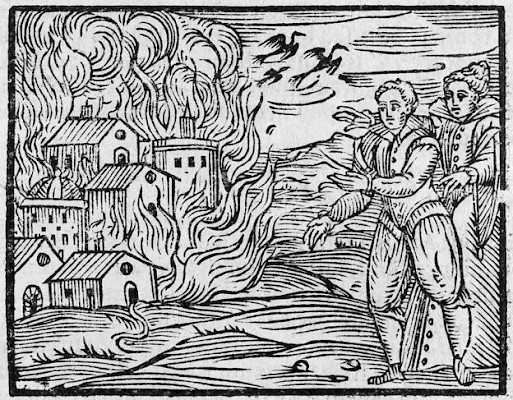Fire and Medieval Warfare
When people think about the weapons of war from the Middle Ages, swords and bows usually come first to mind. However, one scholar is reminding us that the most dangerous weapon in medieval warfare was often fire.

“Fire was the single most destructive weapon in terms of its targeting capacity, range, speed and impact,” says Phil Slavin, a lecturer at the University of Kent. He was speaking at last week’s International Congress on Medieval Studies, giving a paper entitled: “Through These Fields of Destruction, Baptisms of Fire”: Warfare Landscape Destruction by Fire in Fourteenth-Century British Isles.
Slavin, who specializes in medieval environmental and social history, examined the use of fire during the Anglo-Scottish wars of the fourteenth-century, which he sees as a classic example of pre-industrial use of this weapon to unleash large-scale destruction. In fact, in the Scottish Wars of Independence (1296-1328, 1332-57) “nature and landscape were the decisive elements, more decisive than battles” in determining the victors.
The paper examined a number episodes in the wars between England and Scotland, when fire was employed by both sides. Perhaps the worst devastation took place in February of 1356, in what is known as ‘Burnt Candlemas’, when much of the Scottish districts of Berwickshire and East Lothian were burned down by the forces of Edward III.
The economic impact of fire in this region was heavy according to Slavin. The weapon would be used to destroy fields, mills, grain storage facilities - even livestock were set ablaze. Among the numerous examples found in chronicles and other writings, we can find how in 1318 one area in the Yorkshire Dales reported that only 20% of its harvest was collected, the rest having been burnt in the fields. Meanwhile, a raid in Northumbria in 1327 left two water mills and another two wind mills destroyed by fire.
Slavin points out that damage from fire would often be long-term - in particular soil erosion caused by repeated burnings to fields. Some areas would go uncultivated for years, even decades, as attacks destroyed the land and drove away its inhabitants. Northern England and southern Scotland would see poverty and economic depression that would extend long after the fighting had finished, while other parts of the British Isles, unaffected by war, prospered. A Scottish inquest in 1366 revealed that lands in the southern part of the country were generating 50% less revenue than they were in the 13th century. Meanwhile an English survey of properties from 1535 noted that low values in lands within Northumberland, Cumberland, and Westmorland were caused by ‘Destruction of Scots’ that had taken place over two hundred years earlier.
Phil Slavin is a lecturer at the University of Kent. His next book, Communities of Famine: A Fourteenth-Century Environmental Shock in the British Isles, will be published later this year by Brepols. You can read more of his articles and research on his Academia.edu page.




